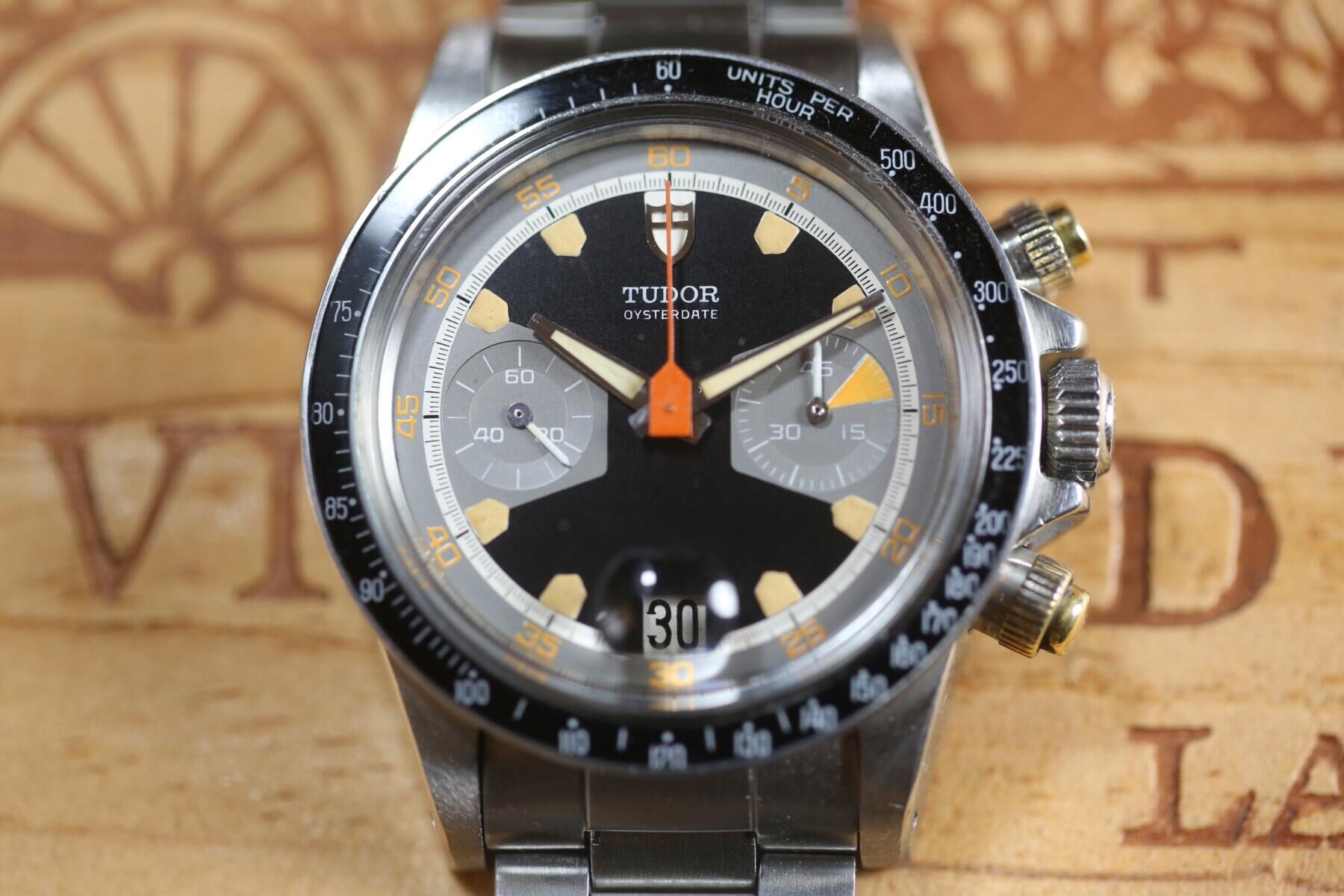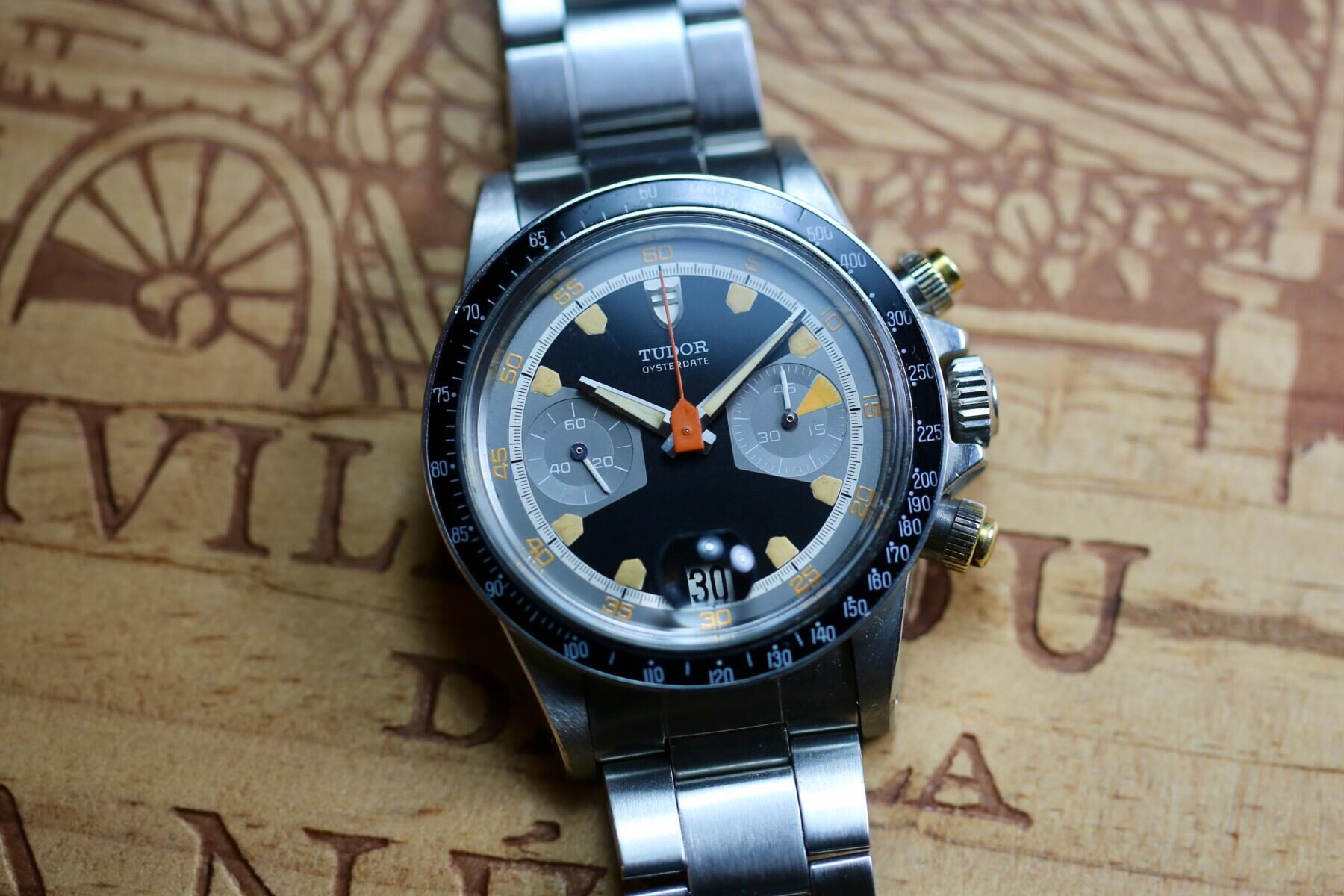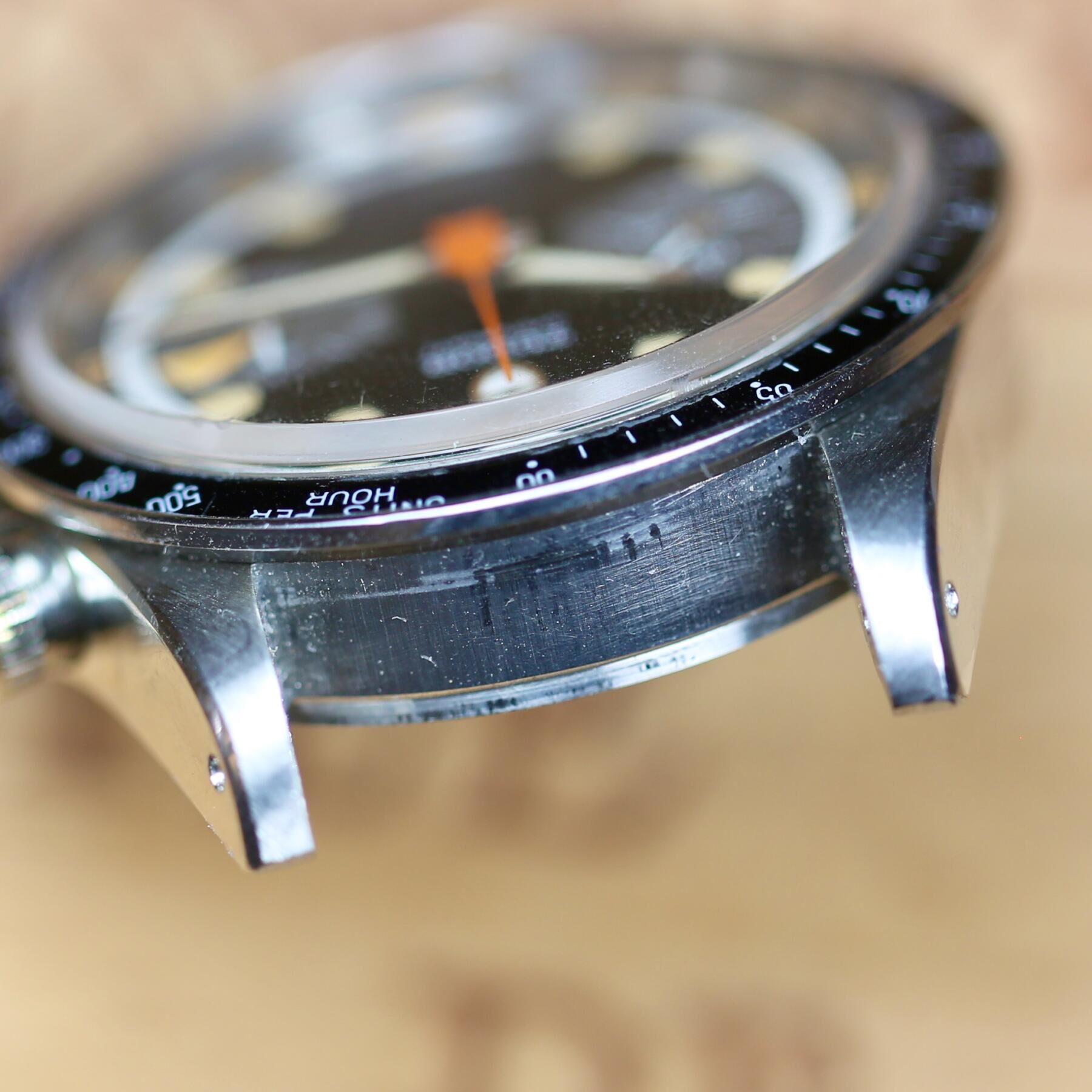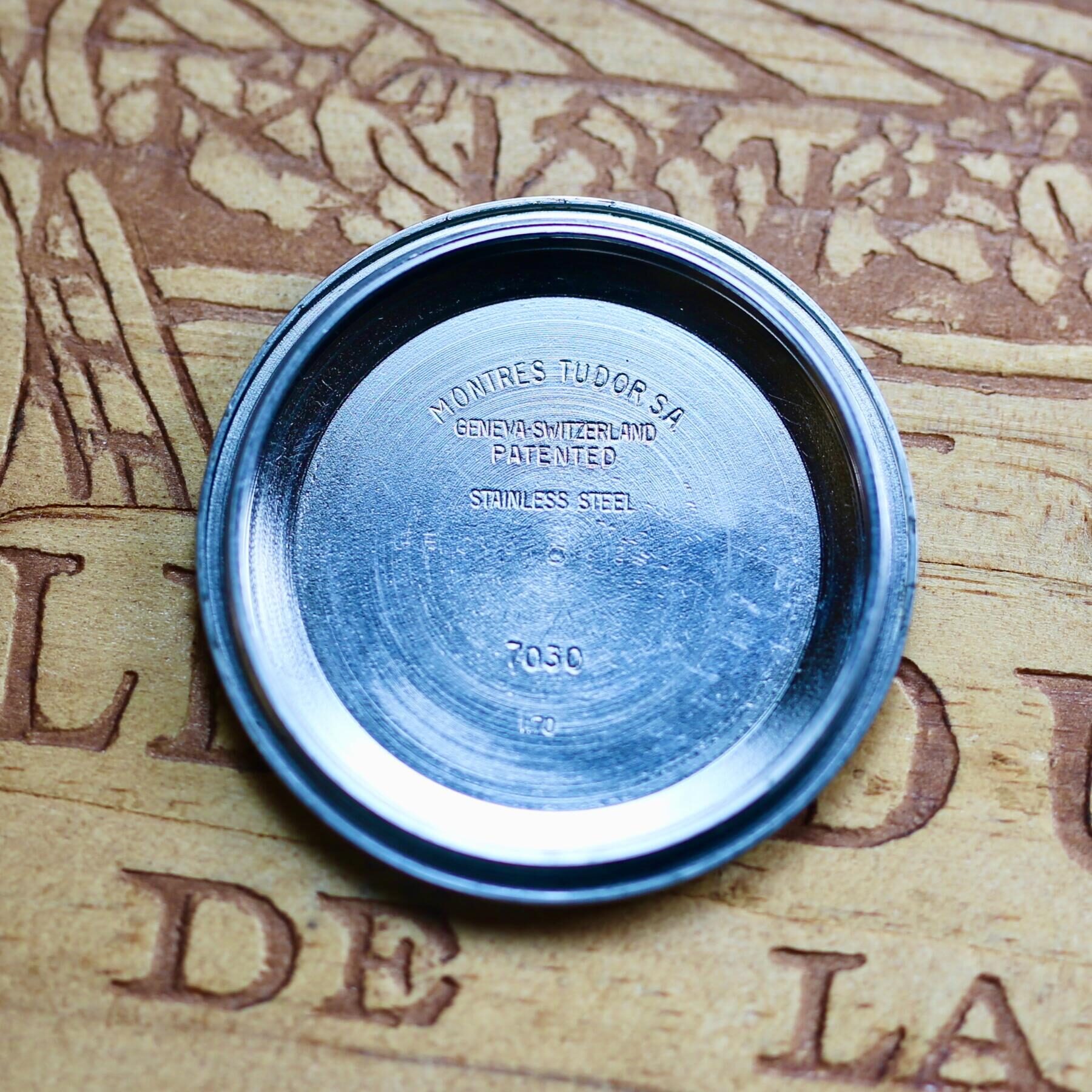
Thrill of The Chase: A Tudor Prototype
When Eric Ku caught the scent of a prototype of the iconic Homeplate chronograph, he just knew he had to have it...
A serial entrepreneur, collector and super-dealer; Eric Ku is brand like no other. I consider it a privilege to call him an old friend and we go way back to the early days of online forums, including the Vintage Rolex Forum. I clearly remember the day he sent me a picture of a Tudor chronograph like no other I’d seen before. Ku picks the story up: “We are used to seeing the word prototype used, when referring to dials on vintage Rolex and occasionally a bezel. These pieces are more accurately proposals or test dials but admittedly there are some striking and great looking ones that have been placed in period correct watches and look cool. A much rarer thing to find is an entire prototype watch, and in Rolex-terms I can maybe think of only one other example that has ever surfaced.” Eric is referring to the Oysterquartz Perpetual Calendar that was owned by James Dowling. “So, when I was made aware of a prototype Tudor chronograph; I just knew I had to get it!”

The prototype has a hand that almost mirrors the hour markers at the pinion, with a long thin hand protruding outwards.
the Tudor chronograph story began in 1970. However, research and development of a new line can take many years. Many brands are now working up to five years ahead in terms of planning and developing new additions to their catalogues. This can be evidenced by the aforementioned proposal dials that Singer created for Tudor, as discussed earlier. The white and black dials feature the Rose logo that preceded the shield emblem that is still in use today. We now know, of course, that Tudor opted for the striking orange, grey and black colour scheme. Both grey base colour and black base colours have been seen in these watches, with a certain mystique about the nature of the black dials. What we do know for sure now though is that at the prototype stage, Tudor were definitely considering a black base dial. How do we know this? Keep on reading…

A Singer chronograph dial proposal from the late 1960s in white

A black version of the proposed dial design (Images: RolexPassionReport. com)
“As is often the case when buying such an interesting watch, the story behind the piece can be as fascinating as the watch itself. And this watch has maybe the greatest. I acquired it from the son of the original owner who was able to tell the story of how his father acquired the Tudor,” states Eric. The story harks back to the golden era of the Rolex group, when some of the most iconic watches were being developed and produced. Central to this story is Rene-Paul Jeanneret, who was the Public Relations Director at Rolex through the 1950s and 60s. Jeanneret is credited with being the mastermind behind the concept of Rolex sports watches being proper tool watches. Submariners for divers, the GMT-Master for pilots and Explorers for true adventurers. It is widely acknowledged that Jeanneret was the driving force behind the development of the dual-timezone watch with rotating bezel and 24-hour hand following a request from Pan-Am. He was also a personal friend of Jacques Cousteau and was instrumental in the development of the dive watches, including the Deep Sea Special being taken down to the depths on the exterior of Auguste Piccard’s bathyscape The Trieste.

The watch is actually in incredibly strong condition and has even been returned to Rolex at some point in the past 15 years or so for a service.
Jeanneret was a good friend to many and was well-known to be a generous man. In fact, this Tudor chronograph is the perfect illustration of the fact. Eric explains, “One of Jenneret’s great friends was taking part in the Athens marathon. According to his son, he placed well in the event and was delighted to have not only completed the race, but to have exceeded his own expectation of his performance. Clearly his friends were pleased, none more so than Rene-Paul Jeanneret. To mark the occasion, Jeanneret took the watch off his wrist and gifted to his friend.” The watch Jeanneret happened to be wearing was a prototype of what we now know as the Homeplate chronograph.
To the casual observer, the watch looks like a reference 7031 Homeplate albeit a rare black dial version. But looking closer there are two very obvious differences. The first is the presence of a very unusual centre seconds hand. The production version of the Homeplate is fitted with, what I describe as, an elongated triangle hand in striking orange. The prototype has a hand that almost mirrors the hour markers at the pinion with a long thin hand protruding outwards. The orange accents on the dial are also a different and more yellow shade to those we are used to seeing. “I don’t believe this is because of fading, as none of the regular Homeplates I’ve handled over the years has reacted like this and under the loupe is looks strong and uniform across the entire dial. The watch is actually in incredibly strong condition and has even been back to Rolex at some point in the fifteen years or so for a service.”

No engravings between the lugs

The orange accents on the dial are also a different and more yellow shade to those we are used to seeing.
The case is also unique. The regular production pieces were given reference numbers 7031 and 7032. The former had a black plastic tachymeter bezel and the latter a brushed steel tachymeter bezel. At the launch of the heritage Homeplate in 2010, Tudor shared a third prototype version with reference 7033. The 7033 prototype has a 12-hour rotating bezel which eventually came into use in the second series of chronographs in 1971, the iconic Monte Carlo. The prototype 7033 resides in the Tudor Museum Collection. The only difference is the bezel, however and the watch is the same as regular 7031s and 7032s. Eric’s watch is very different in that the watch has no engravings at all. No serial number, no refence number and not even the “ORIGINAL OYSTER CASE by ROLEX GENEVA” inscription on the case back. The caseback does very much belong on this watch though, as inside there is the number 7030 stamped and the date stamp (xxx). The regular watches did not have the 7030 stamp but did indeed have the date code.

Eric’s watch is very different in that it has no engravings at all. No serial number, no reference number and not even the “ORIGINAL OYSTER CASE by ROLEX GENEVA” inscription on the caseback.

The inside of the caseback has the number 7030 stamped and the date stamp (1.70)
“I’ve found some very special watches in my career, special order pieces, unique watches and everything in between. I’ve even occasionally discovered an as yet unknown model. But this is arguably my greatest find from the Rolex house, as it is a fully functioning pre-production prototype with an incredible story. I’m not sure I’ll equal or better this when it comes to a Tudor or Rolex!”



